All the solutions provided in McGraw Hill My Math Grade 3 Answer Key PDF Chapter 10 Lesson 7 Fractions as One Whole will give you a clear idea of the concepts.
McGraw-Hill My Math Grade 3 Answer Key Chapter 10 Lesson 7 Fractions as One Whole
Whole numbers can be written as fractions. When the numerator is the same as the denominator, the fraction equals 1.
Math in My World
Example 1
There are 4 panes of glass in one window of Landon’s classroom. Each pane of glass is \(\frac{1}{4}\) of the whole window.

How many fourths equal 1 whole?
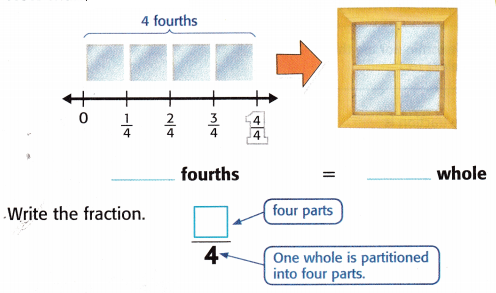
Place a point on the number line to graph this fraction. The models show that and 1 share the same point and have the same size.

So, 4 fourths = ________________ whole. Or, ![]() = 1.
= 1.
Answer:
Given that,
There are 4 panes of glass in one window.
Each pane of glass is \(\frac{1}{4}\) of the whole window.
So, 4 fourths equal to 1 whole or 4/4 = 1.
Example 2
How many wholes are in \(\frac{3}{1}\)?
Think: 
So,  = \(\frac{3}{1}\) or ___________. There are ____________ wholes in \(\frac{3}{1}\).
= \(\frac{3}{1}\) or ___________. There are ____________ wholes in \(\frac{3}{1}\).
Answer:
Given that,
\(\frac{3}{1}\) or 3/1.
There are 1 whole in the \(\frac{3}{1}\).
Talk Math
How can you tell whether \(\frac{6}{1}\) is greater or less than 1?

Answer:
Given that,
The latex is \(\frac{6}{1}\) = 6/1.
6/1 = 6.
6 is greater than 1.
Therefore \(\frac{6}{1}\) is greater than 1.
Guided Practice
Write a fraction to represent the shaded part of each whole or set of wholes.
Question 1.

Answer:
The fraction to represent the shaded part of each whole is = shaded part/ number of parts
= 8/8 = 1.
Therefore the fraction of the shaded part is 8/8.
Question 2.
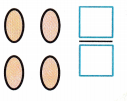
Answer:
The fraction to represent the shaded part of each set of wholes is = shaded part/ number of parts
= 4/1
Therefore the fraction of the shaded part is 4/1.
Independent Practice
Write a fraction to represent the shaded part of each whole or set of wholes.
Question 3.

Answer:
The fraction to represent the shaded part of each whole is = shaded part/ number of parts
= 4/4 = 1.
Therefore the fraction of the shaded part is 4/4.
Question 4.

Answer:
The fraction to represent the shaded part of each set of whole is = shaded part/ number of parts
= 2/1
Therefore the fraction of the shaded part is 2/1
Question 5.

Answer:
The fraction to represent the shaded part of each whole is = shaded part/ number of parts
= 2/2 = 1.
Therefore the fraction of the shaded part is 2/2.
Question 6.

Answer:
The fraction to represent the shaded part of each set of whole is = shaded part/ number of parts
= 6/1
Therefore the fraction of the shaded part is 6/1.
Question 7.

Answer:
The fraction to represent the shaded part of each whole is = shaded part/ number of parts
= 8/8 = 1
Therefore the fraction of the shaded part is 8/8.
Question 8.
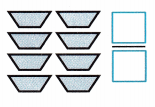
Answer:
The fraction to represent the shaded part of each set of whole is = shaded part/ number of parts
= 8/1.
Therefore the fraction of the shaded part is 8/1.
Write each whole number as a fraction.
Question 9.
4 = ![]()
Answer:
Given that,
The number is 4. It is an a whole number.
The fraction of 4 is 4/1.
Question 10.
2 = ![]()
Answer:
Given that,
The number is 2. It is an a whole number.
The fraction of 2 is 2/1.
Question 11.
6 = ![]()
Answer:
Given that,
The number is 6. It is an a whole number.
The fraction of 6 is 6/1.
Question 12.
1 = ![]()
Answer:
Given that,
The number is 1. It is an a whole number.
The fraction of 1 is 1/1.
Question 13.
8 = ![]()
Answer:
Given that,
The number is 8. It is an a whole number.
The fraction of 8 is 8/1.
Question 14.
3 = ![]()
Answer:
Given that,
The number is 3. It is an a whole number.
The fraction of 3 is 3/1.
Find the missing numerators and denominators. Then circle the model that is not a fraction for 1 whole.
Question 15.
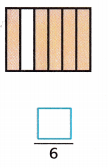
Answer:
Here the missing numerator is a 5/6.
The 5/6 is not a fraction for 1 whole.

Question 16.

Answer:
The missing numerator is 4.
The 4/4 is a fraction for 1 whole.
Question 17.
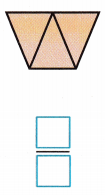
Answer:
The missing numerator and denominator is 3.
The 3/3 is a fraction for 1 whole.
Question 18.

Answer:
The missing denominator is 2.
The 2/2 is a fraction for 1 whole.
Question 19.
Write three different fractions equivalent to 1. ![]() ,
, ![]() ,
, ![]()
Answer:
The different fractions equivalent to 1 is 1/1, 2/2, 3/3.
Problem Solving
Question 20.
Tim has 7 magazines. He gave all of them to Mike. Write a fraction that represents the part of the magazines Tim gave to Mike. Then write the fraction as a whole number.
![]() = ______________
= ______________
Answer:
Given that,
Tim has 7 magazines. He gave all of them to Mike.
The fraction of magazines given by Tim to Mike is 7/7 = 1.
Therefore Tim gave 1 fraction as a whole number to Mike.
Question 21.
Conner has 3 cups of raisins. Write the number of cups of raisins that Conner has as a fraction. Then write the fraction as a whole number. Graph this fraction on the number line.

![]() = _______________
= _______________
Answer:
Given that,
Conner has 3 cups of raisins.
The number of cups of raisins that conner has as a fraction is 3/3.
3/3 = 1.
1 is a whole number.
![]()
Question 22.
Mathematical PRACTICE Make Sense of Problems Carla took two photographs at a zoo. Two of the photographs were of gi Write a fraction that represents the part of the photographs that were giraffes. Then write the fraction as a whole number.
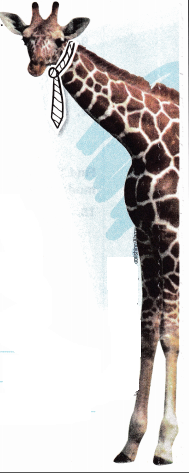
![]() = _________________
= _________________
Answer:
Given that,
Carla took two photographs at a zoo.
Two of the photographs were of giraffes.
The fraction that represents the part of the photographs that were giraffes is 2/2.
The whole number of the fraction is 1.
HOT Problems
Question 23.
Mathematical PRACTICE Model Math Draw figures to represent \(\frac{4}{1}\) and \(\frac{6}{6}\) as whole numbers.
Answer:

The above figure represents the \(\frac{4}{1}\).

The above figure represents the \(\frac{6}{6}\).
Question 24.
Building on the Essential Question How can whole numbers be represented as fractions?
Answer:
The fraction is not a whole number but the whole number can be written has a fraction.
By representing a fraction as a whole number write the denominator has 1.
McGraw Hill My Math Grade 3 Chapter 10 Lesson 7 My Homework Answer Key
Practice
Write a fraction to represent the shaded part of each whole.
Question 1.
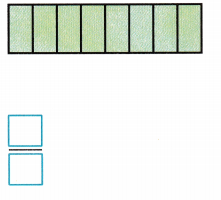
Answer:
Given that,
The total parts = 8.
The shaded parts = 8.
The fraction of the shaded part of each whole is 8/8 = 1.
Question 2.
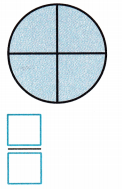
Answer:
Given that,
The total parts = 4.
The shaded parts = 4.
The fraction of the shaded part of each whole is 8/8 = 1.
Write a fraction to represent each set of wholes.
Question 3.
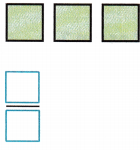
Answer:
Given that,
The total number of figures is 3.
The fraction of the shaded part of each set of wholes is 3/1
Question 4.
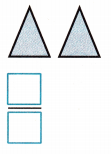
Answer:
Given that,
The total number of figures is 2.
The fraction of the shaded part of each set of wholes is 2/1
Write each whole number as a fraction.
Question 5.
8 = ![]()
Answer:
Given that,
The number is 8. It is an a whole number.
The fraction of 8 is 8/1.
Question 6.
4 = ![]()
Answer:
Given that,
The number is 4. It is an a whole number.
The fraction of 4 is 4/1.
Question 7.
2 = ![]()
Answer:
Given that,
The number is 2. It is an a whole number.
The fraction of 2 is 2/1.
Question 8.
6 = ![]()
Answer:
Given that,
The number is 6. It is an a whole number.
The fraction of 6 is 6/1.
Problem Solving
Question 9.
Gary sliced an apple into eighths. He gave eight of the pieces to his friends. Write a fraction that represents the part of the apple that was given to his friends. Then write this fraction as a whole number. Graph the fraction on the number line.

![]() = ________________
= ________________
Answer:
Given that,
Gary sliced an apple into eighths.
He gave eight of the pieces to his friends.
The fraction of the apples that was given to his friend is 8/8
8/8 as a whole number is 1.

Question 10.
Mathematical PRACTICE Use Number Sense The art teacher partitioned a piece of poster paper into three equal pieces. Each part was decorated for a school dance. Write a fraction that represents the part of the poster paper that was decorated for the school dance. Then write this fraction as a whole number.
![]() = ________________
= ________________
Answer:
Given that,
The art teacher partitioned a piece of poster paper into three equal pieces.
Each part was decorated for a school dance.
The fraction that represent the part of the poster paper decorated for the school is 3/3 = 1.
The whole number is 1.
Test Practice
Question 11.
Which of the following is equivalent to \(\frac{4}{4}\)?

(A) \(\frac{1}{4}\)
(B) 1
(C) \(\frac{4}{1}\)
(D) 4
Answer:
Given that the latex is \(\frac{4}{4}\)
\(\frac{4}{4}\) = 1.
Option B is the correct answer.